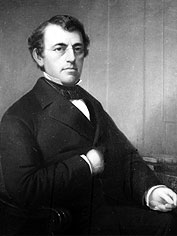
Leaving the Army to work for private company allowed Parrott the freedom to experiment with gun design without the red tape that government work, was known for even then. Parrott began playing around with artillery design, eventually leading to the development of the first rifled cannon. (For the September 1861 Scientific American article announcing his discoveries, click here.)
The word rifling means carving a spiral into the inside of a tube. Rifling a cannon made the projectile shot from it spin as it left the barrel. As anyone who has ever thrown a football will know, putting a spin on a projectile allows for greater directional accuracy of the projectile. The greater the accuracy, the more deadly the cannon barrage; in theory, at least, rifling allowed artillerymen to pinpoint their targets instead of just firing in the general direction and hoping for the best.
Rifling the cannon led to a secondary problem, however. In order for the rifling to be effective, whatever was fired from the cannon had to fit tightly. At the time of the Civil War, most artillery pieces were still loaded from the front end, the muzzle end. That meant that whatever was fired had to go in the same way it came out, and that whatever went in had to be slowly and painstakingly corkscrewed down the rifle grooves before it could be fired back out. Parrott solved this problem by developing a new type of shell for his muzzle-loading rifled cannon. This new shell had a ring of brass, a softer metal, at its base. When fired, the brass expanded to fit the rifling. This sped up the time it took to load and fire cannon.

